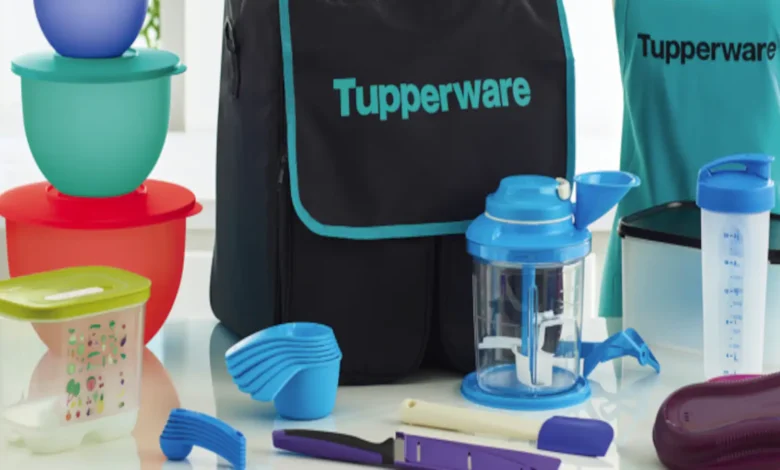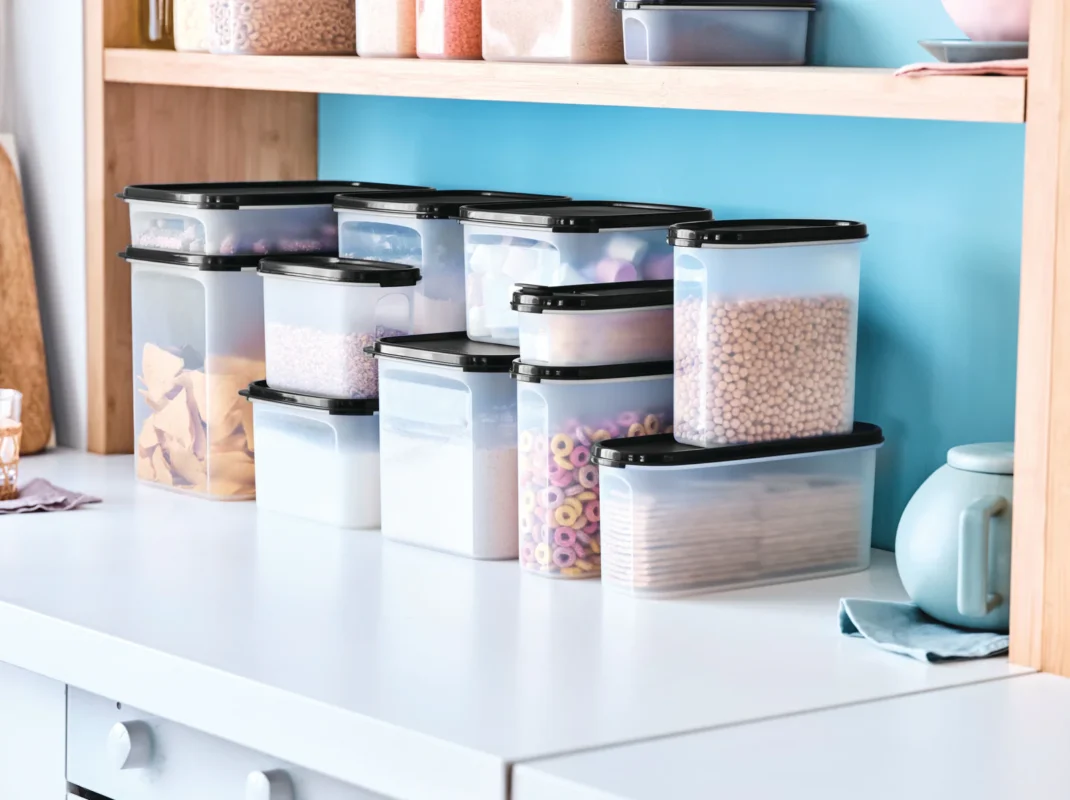Tupperware Filed For Chapter 11 Bankruptcy
Tupperware - the American brand cherished by mothers all over the globe filed for chapter 11 bankruptcy protection in Delaware.

Tupperware is known for its durable kitchen containers, however the brand has been struggling for quite some time now.
The sales have declined and the competition has gotten worse as several local brands have made their way to the market.
Tupperware listed it’s assets between – $500 million to $1 billion, and the liabilities have been listed between – $1 billion to $10 billion.
Let’s Delve Into The Making Of The Iconic Brand
 In 1946 chemist Earl Tupper, having had some inspiration at work in a plastics factory, set out to create an airtight seal for plastic containers and birthed Tupperware. He invented something revolutionary: an answer to food waste that served the needs of post-war American families very eager to stretch their budgets .
In 1946 chemist Earl Tupper, having had some inspiration at work in a plastics factory, set out to create an airtight seal for plastic containers and birthed Tupperware. He invented something revolutionary: an answer to food waste that served the needs of post-war American families very eager to stretch their budgets .
However, marketing of the products played an important role in this success.
In 1948, Brownie Wise invented Tupperware parties, which was sales of products demonstrated to groups of women at people’s homes. Such direct sales proved to be extremely effective and provided unique possibilities for women’s earnings when women’s economic possibilities were limited.
 The Tupperware party soon became a cultural phenomenon offering women-social interaction, financial independence, and a sense of purpose. Such success resulted in the brand eventually withdrawing its products from retail stores and sticking to the direct-sales model.
The Tupperware party soon became a cultural phenomenon offering women-social interaction, financial independence, and a sense of purpose. Such success resulted in the brand eventually withdrawing its products from retail stores and sticking to the direct-sales model.
The Golden Era Of Tupperware –
Tupperware experienced explosive growth throughout the 1950s and 1960s. The product range grew from just food storage containers to a vast collection of kitchen equipment and housewares. Tupperware is now in every American household and goes well beyond being seen represented in Buckingham Palace. An undercover reporter for the newspaper who disguised himself as one of the palace’s footmen photographed royal Tupperware on Queen Elizabeth II’s breakfast table.
The brand enjoyed mass culture flair with appearances on the silver screen, the small screen, and even the stage. The PBS film “Tupperware!” in 2004 and the play “Sealed for Freshness” brought the brand’s history to life for new generations.
Tupperware continued to innovate and expand into further diversifications over the following years. Over the 2000s, the company diversified its portfolio through buying numerous beauty and personal care brands, such as Avroy Shlain, Fuller Cosmetics, NaturCare, Nutrimetics, and Nuvo. Most of these acquisitions were also direct-selling brands, so always similar to Tupperware’s core business model.
The Decline Of The Brand-
 Although Tupperware was such a robust brand with a century of success under its belt, the company experienced extremely harsh knocks recently. A combination of factors accounted for its decline as follows:
Although Tupperware was such a robust brand with a century of success under its belt, the company experienced extremely harsh knocks recently. A combination of factors accounted for its decline as follows:
Shift in Consumer Behavior: There was a growing trend of women entering the workforce, and hence Tupperware’s party model based on old traditions was no longer quite viable. Consumers increasingly wanted the convenience of acquiring food storage products via newer means, be it from online shops or general merchandise retailers.
Competition: The market for food storage containers grew crowded over time.
Now there are very similar versions available, by brands like – Rubbermaid, as well as private labels from retailers like Target and Walmart. Amazon, too, has come out with its food storage containers line.
The changing material preferences: Consumers are now on a lookout for more sustainable alternatives to plastics-the glass or stainless steel containers to replace their plastic one.
According to Jennifer Christ, who heads consumer and commercial research for the Freedonia Group, consumers are more inclined to buy sustainable, durable goods now.
Failure To Keep Up With Times: Tupperware’s inability to adapt to the changing mind of the consumer and the way they shop is blamed as the reason for failure by critics.
Being a company hinged directly on direct sales, initially the strength for Tupperware, had, with the passage of time, turned out to be the company’s fatal weakness in the digital world.
Women’s participation in the workforce, which was increasing steadily over time, became one of the major grounds of criticism by financial analysts regarding Tupperware’s persistence with the same model.
Financial Woes: The Tupperware Company has experienced decades of steady sales decline. A brief spike at the beginning of the COVID-19 crisis, as consumers were cooking more from home, did little to alleviate its financial woes in 2024, as it continued to present more than $1.2 billion in total debts and only $679.5 million in total assets.
Operational Inefficiencies: The company cited internal inefficiencies in its bankruptcy filing, which proved difficult to scale around the world and that already had threatened its financials.
Economic Challenges: The company also pointed out that the “challenging microeconomic environment” of recent years contributed to its financial straits.
Attempts at Revitalization
The brand acknowledged that something was missing, and Tupperware has undertaken a number of revitalization efforts in the past couple of years
Expanding Distribution Channels: The company entered Amazon and started selling in retail chains like Target and Macy’s, thereby removing its erstwhile direct selling status.
Sustainable Product Lines: Tupperware launched a range of products made of sustainable material back in 2019 and expanded it further in 2021 to reach the consumers who care for nature.
However, Tupperware’s financial troubles worsened despite this. In 2022, the company began searching for more funding and advised the investors that it may not be able to continue operating.
The firm was at the risk of its listing being revoked if the company did not meet the filing requirements of the New York Stock Exchange.
The Filing of Bankruptcy
Tupperware Brands filed for Chapter 11 bankruptcy protection on September 17, 2024. The company presented as one of the main reasons behind its financial casualty the widespread trend by consumers away from direct sales as part of its declaration. The company further blamed growing public health and environmental concerns about plastic, internal inefficiencies, and a challenging economic environment as contributory factors to its financial straits.
Tupperware employs over 5,450 across 41 countries, and it has partnered with over 465,000 independent sales consultants worldwide. The company said that it intends to continue operating throughout the bankruptcy process and would like the court to allow the sale in order to preserve the brand.
 The president and CEO of Tupperware, Laurie Ann Goldman stated, “This bankruptcy process will grant critical flexibility as the company continues to transition.” According to the release, she further added, “Whether you are a devoted member of our Tupperware team, sell, cook with, or simply adore our Tupperware products, you are part of our Tupperware family. We look to continue serving valued customers for high-quality products they love and trust in the course of this process.”
The president and CEO of Tupperware, Laurie Ann Goldman stated, “This bankruptcy process will grant critical flexibility as the company continues to transition.” According to the release, she further added, “Whether you are a devoted member of our Tupperware team, sell, cook with, or simply adore our Tupperware products, you are part of our Tupperware family. We look to continue serving valued customers for high-quality products they love and trust in the course of this process.”
The objection of bankruptcy petition is by new financing lenders who have recently financed Tupperware as this opposes dismissal of the petition or conversion of the case into Chapter 7, which ultimately would result in the liquidation of the company. Otherwise, they request permission to take an action against the company for collecting the amount owed to them.
Market Analysis and Future Prospect
It really marked the end of an era. There were a lot of questions looming regarding the future of this company, and Neil Saunders, the managing director of GlobalData, was quoted as saying that: “The reality is that the decline at Tupperware is not new. It is very difficult to see how the brand can get back to its glory days.”
While sales of food storage supplies are up 18 percent from 2019 overall, per market research firm Circana, it’s not been a boon for Tupperware. “The consumer will buy food storage at a big box store like Target or Walmart, where other home storage brands with lower price points reside,” Saunders said.
It also took a toll on its stock with falls of 75% in the course of the year before filing for bankruptcy. Its fall actually echoes fears by investors that it would not do enough to turn things around in an increasingly competitive market.
Despite these challenges, the company continues to assert that it will serve customers with its products. There is already an indication that the company plans to “further advance Tupperware’s transformation into a digital-first, technology-led company,” possibly increasing its dependence on online sales and other digital marketing strategies.
However, the future is bleak. Tupperware is bound to face another challenge-the new lenders opposing it filing for bankruptcy. These new lenders may succeed in getting the petition dismissed or converted to a Chapter 7 case, which may further lead to the liquidation of this once-famous brand.




